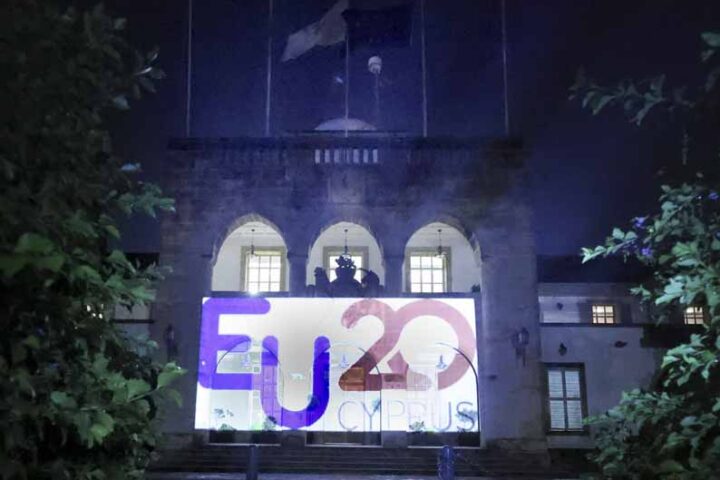By Sylvia Westall
Two million euros in three months: that's the cost so far for Vienna's Albertina Museum, home to landmark Impressionist works by Monet and Renoir, as the financial crisis pulled some of its most generous sponsors.
Museums and other cultural institutions globally are being pinched, scaling back exhibitions and cutting staff to cope with shrunken endowments, thriftier benefactors and cuts in state funding. Some are closing.
"It's going to get harder and harder," said Elizabeta Petrusa Strukelj, head of European museums network NEMO.
"Museums have been at the back of the queue for government money for years, so we know how hard it is already. But the crisis will have an impact on the whole field and on our culture," she said, pointing to unfulfilled plans for national museums in Slovenia as just one example.
The Albertina serves to illustrate how the financial crisis is reversing a trend of museums globally riding a wave of private sponsorship to grow.
Its 200-year-old collection, including works by Pablo Picasso and one of the world's biggest sets of drawings, had benefited from the boom as the wealthy poured in donations.
Held up as an example of a successful business-minded gallery, now its exposure to the private sector has hit hard.
"The financial crisis has affected us enormously," director Klaus Albrecht Schroeder said from his office in the Neo-Classical palace, rebuilt after World War Two bomb damage.
"We have less than 100 major patrons … and they are definitely affected by the economic and financial crisis."
Like many European museums and galleries which receive state money, the Albertina also relies on a small pool of donors to help fund exhibitions and maintain its art collection.
The Museum of Contemporary Art in Los Angeles nearly had to close until a billionaire philanthropist stepped in last year with a $30 million rescue plan.
In Vienna, the Albertina has to cover more than two-thirds of its 18 million euro ($24.53 million) annual costs itself and has already started a far-reaching savings programme.
With many deals signed two years in advance, there is a time-lag between a crisis hitting and this being reflected in sponsorship, according to Colin Tweedy, chief executive of Arts & Business, a London-based network and consultancy.
He says most large corporate sponsors are honouring their contracts but it is when these deals run out, or when institutions seek new sponsors, that they may fall into trouble.
"People think 2009 is secure for a lot of sponsorships but what we are predicting is that 2010 and 2011 will be where the real problems hit."
TOURIST GAP
Corporate investment has already started to dip in arts, according to research from Arts & Business: the number of visitors and the amount they spend in shops and cafes is also expected to fall.
"Tourists cannot afford the flight, or might be scared to take a holiday and leave their jobs, so they are not coming on holiday and to the museums," said Julia Flunger, head of marketing and development at Vienna's Belvedere Palace.
The Belvedere, home to the world's largest Gustav Klimt collection, drew some 800,000 visitors in 2008 and Flunger says it will feel the gap left by munificent American visitors as they cut down on trips to Europe.
Of course, galleries and museums are not alone: the artistic community fears that if funding starts to dry up, it is the smaller, more specialised institutions that will be hit.
In Berlin, the Cicero Gallery for Political Photography has closed after two and a half years. A spokeswoman said while the project always had a set time-frame, the difficult financing environment was one reason for not extending its run.
SMALLER FISHES
The Belvedere is having to change its sponsorship tactics: "It is much harder work — you need to make more calls and go after the smaller fishes at the moment," Flunger said.
"I would not dare to ask a company to support us which I knew had been making job cuts, they are off limits."
The National Portrait Gallery, a major London tourist draw, has reacted to Britain's tougher environment by introducing a new sponsorship scheme.
Starting at 6,000 pounds ($8,795) per year, it allows companies to focus their money on specific areas rather than pay a blanket contribution, which it hopes will encourage sponsors to carry on parting with their cash.
Vienna's Belvedere is looking at barter ideas — for example, asking companies to fund champagne and cocktails at receptions in exchange for advertising.
The Peggy Guggenheim Collection, set on the banks of the Grand Canal in Venice, thinks museums will have to reduce the costs of such events.
"We will certainly keep having exhibition openings but maybe serving only prosecco instead of different types of wines or instead of having different types of food maybe serving just one," Alessandra Rubelli from the Guggenheim said, adding that while long-term investors are staying on board, one-off sponsorship deals for exhibitions are more difficult to seal.
For Art & Business' Tweedy, it is essential to keep up perks for sponsors, even if they cancel contracts or ask for a break.
"Keep your friends close to you, if you can give them a free exhibition…you are far more likely to get their loyalty in years to come."







